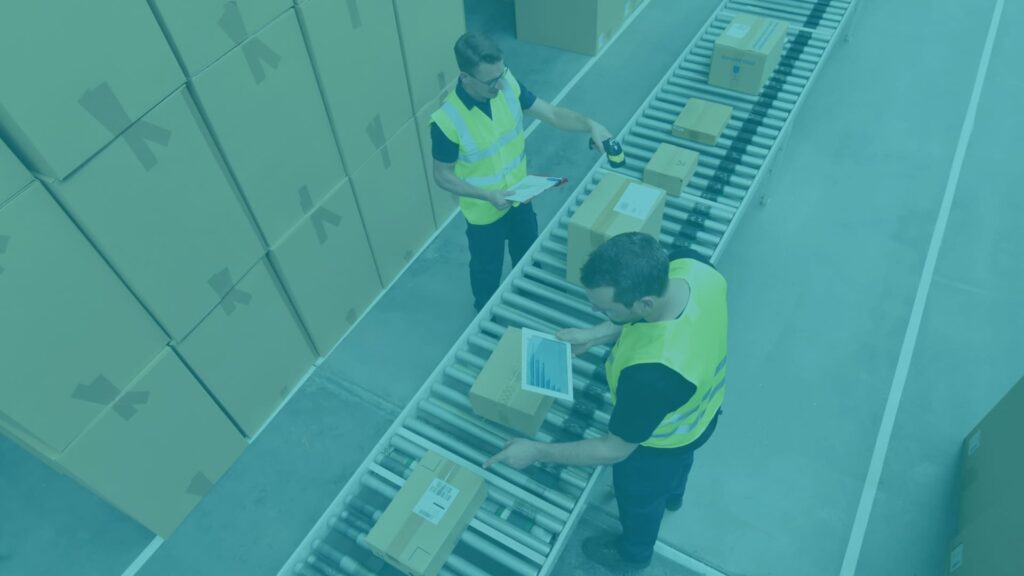Blockchain & Supply Chain: a Dynamic Duo
Supply chain software developments are critical to the global commerce industry. If there are any friction points from manufacturing to distribution, a domino effect of delays and lost revenue is inevitable.
Supply chain management businesses need top-of-the-range technological solutions that improve the integrity and transparency of their supply chain management. A solution addressing these all too well-known concerns is required, where Blockchain comes in.
In this blog, we’ve explored not only why it’s needed but also how your business can go about utilizing it:
Determining the Best Use Case for Blockchain
First things first, it’s a good idea to acknowledge that Blockchain is a complex technology and that it will be challenging to link every SCM (Supply Chain Management) aspect to it at first.
For the sake of simplicity and cost, the most effective solution is often to start small. With an experienced developer, each part of the chain will be checked to determine what needs better oversight and custom improvements.
Determining an initial use case will make it easier to implement more complex blockchain supply chain solutions down the line. Here are some things your business will need to keep in mind when reviewing this:
Traceability and Sourcing
Blockchain technology provides an accurate record of where products are in the shipping process. With custom features, real-time information about shipping orders and delivery times will be readily available and accessible from any device.
Every party involved can observe a product’s progress in real-time. For a bonus, a business’s customers can also trace the chain backward to gain insight into the sourcing of their purchases—this aids in building trust with your customers and gaining a reputable reputation.
Document Version Control
Moving products through the chain involves written contracts, receipts, and other verifications, such as obeying client and government rules.
An immutable record is created with a blockchain ledger, preventing unauthorized changes and other fraudulent activities.
This technology also improves supply chain safety and security. The stakeholders can quickly trace a distribution path and contact the affected retail stores directly in a product recall. They can also trace ingredients back to their suppliers in food recalls. This pinpoint accuracy narrows the scope of the recall and minimizes the damage to both consumers and any businesses involved.
Smart Contracts and Payment Processing
A smart contract is stored on a blockchain program and set to run when certain conditions are met. For instance, when a retail store receives its delivery, this triggers the contract to make an immediate payment.
This arrangement avoids delays, supports cash flow, and improves UX (User Experience).
What About Blockchain Architecture?
When a business determines the starting point for a blockchain project, the next step is planning the framework necessary for success.
It is essential to make an informed decision on this to avoid unnecessary expenses, so here are the main three architecture options:
Centralized Blockchain Networks
A centralized system is an appropriate solution for projects that involve local networks. With this model, data remains on a central server maintained by the business.
Though the centralized design limits the scale of networks, it can work well for smaller tasks like maintaining in-house documents of version histories.
Decentralized Blockchain Networks
A decentralized solution is what most associate with blockchain technology. This model involves creating a network of computers that can all access the same information.
When working with broad supply chain issues, a business will want to implement a decentralized network where all participants can record and verify transactions in real-time.
Authentication and Consensus
Your network must have an authentication mechanism that verifies a user has permission to input data and a consensus mechanism that verifies the accuracy of the information on different blocks.
With these custom features, your business will have the power to decide who has access to what data, which is crucial when such sensitive information is involved.
Blockchain for Your Business
Hopefully, you now have an understanding of the goals and scope of Blockchain. Now it’s time to enter the development stage, and there are multiple pathways available for businesses to accomplish this:
Internal Blockchain Applications Development

If your IT team has experience with blockchain application development, they can create an in-house application. Following this route will give your business complete control over the process. However, it may prove a challenge for an in-house team to develop (as a blockchain project is complicated and should preferably have experienced oversight).
Blockchain-as-a-Service (BaaS)
The growing popularity of Blockchain combined with its complexity has led to vendors who offer their blockchain resources as a service. For instance, businesses like Amazon and Microsoft make it possible to develop an application that links to their blockchain environment.
This solution puts the maintenance and security of the blockchain network in the hands of a more significant-tech business.
However, there are drawbacks to choosing an off-the-shelf solution like this, as it cannot be customized to your business’s specific needs and problems.
Outsourcing to a Software Development Business
A third-party business that provides blockchain development services will have the experience to bring a small or large-scale project to fruition. These professional developers will help build the application, connect it to your supply chain partners, and integrate it seamlessly.
These developers will be able to customize the Blockchain to your business’s own supply chain software, including all of its unique qualities and problems. Outsourcing to a reputable developer is the popular choice for reliable and effective integrations.
Blockchain System Deployment
Product Testing
The next step is testing the functionality of your blockchain solution. The first test will focus on a single product or pathway in the supply chain. Followed by ensuring that a shipment, from start to finish, provides data for analysis and verification.
If the blockchain system works on a small scale, then your business can implement it on a larger one.
Necessary Maintenance
Supply chains constantly develop alongside new technological advancements, new sourcing partners, and evolving manufacturing practices. So even one integrated with a blockchain solution will need the occasional adjustments to remain effective.
But of course, if your business invested in a custom blockchain, then this maintenance will be much less often and, in turn, less costly.
Blockchain: A Lasting Solution
The truth is businesses are slow to adopt new technology because of the effort and money it takes to adopt a new system.
However, with careful consideration, onboarding a blockchain solution can be a hassle-free process because the reality is that a smooth transition (without a hefty price tag) can be achieved by hiring an experienced blockchain supply chain software developer.

SCM businesses can look to Blockchain in supply chain management solutions. It removes the need for repetitive, manual processes that take more time and more workforce. Your business will gain the competitive edge needed in today’s ruthless industry by utilizing it.
With a custom developer at your side, there is little your business’s supply chain software cannot achieve in offering solutions. And in today’s market, which has been permanently changed by the pandemic, being able to provide the most in commerce interoperability is crucial in meeting customer expectations and staying ahead of the competition.